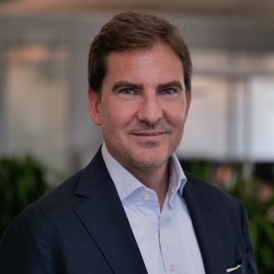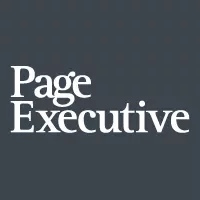Looking to hire your next leader?
Get in touch with one of our consultants now to discuss your leadership talent requirements.


For the first time in history, our workforce is uniting three generations of employees. Companies are logically looking for the best talent to fill their leadership roles. Executive recruiters and the businesses they work with are making giant leaps in enriching company cultures and establishing diversity and inclusion by evolving what it means to talk about (and hire for) leadership profiles.
Diversity is of far greater benefit to a company than generational rhetoric and stereotyping. If recruiters and employers can keep an open mind and an open door, they can harness the multiple advantages of multigenerational leadership.
To stay ahead of the curve and the competition, savvy senior leaders are recognising and rethinking their unconscious bias regarding generational differences.
Executives across the board are moving from a fixed mindset about talent to a growth mindset, shaking the very foundation of what being a “generation” is – and empowering employees to bring unique skill sets, and greater impact, to the table.
So, how can you find senior leaders with the right mindset to manage the multigenerational workforce?
Research by Bloomberg reveals that by 2026, 30% of people aged 65–74 will be employed in the workplace, side by side with younger generations. In fact, the office is the most likely place to find various generations interacting under one roof. Learning to understand each other and avoiding prejudices about how people of certain generations are likely to behave is essential to work effectively together.
This is especially true when it comes to identifying, on-boarding and integrating effective leaders.
“For senior hires, we notice that our clients are generally more interested in candidates that are on the upward trajectory in their career, rather than the latter stages. This isn’t always the right decision and we will challenge them with a recommendation based on our assessment of each individual,” explains Jessica Whitehead, Partner and Global Head of HR Practice UK
For senior hires, we notice that our clients are generally more interested in candidates that are on the upward trajectory in their career, rather than the latter stages. This isn’t always the right decision and we will challenge them with a recommendation based on our assessment of each individual.
Raphael Asseo, Partner Europe, agrees. “Age is often wrongly associated with steps: you cannot be CEO at 30, nor can you step down to a number 2 role when you have already reached number 1. This is where an executive partner can offer added insight and perspective. There are no greater or lesser roles anymore. There is only a leader’s next great challenge, in the moment that they are ready to rise up to it,” he says.
Countless studies have proven that work attitudes are similar across generations. CultureAmp found that there are few or no differences across generations in career opportunities, confidence in leadership, personal learning and development, communication, etc.
Senior leaders often assume that different generations can’t co-exist and thrive together in the workplace. But diversity can be a lifesaver.
Asseo explains, “Senior leaders with diverse backgrounds and ages can contribute unique perspectives, ideas and experiences, helping to build resilient, resourceful organisations that outperform those that do not invest heavily in diversity.”
According to a 2018 Boston Consulting Group study, companies with diverse management teams, i.e. those including women, minorities, different ages and educational backgrounds, have 19% higher revenues – thanks to their capacity for innovation.
As Whitehead explains, “Executive recruiters need to assert the benefits of multi-gen leadership to their clients, especially when those clients have a clear expectation regarding who they are or are not looking for.”
So, which stereotypes should be avoided?
So, what does this mean for executive recruitment? As Asseo explains, “Successfully integrating leaders of different generations means actively encouraging cross-generational collaboration. Senior leaders can help by listening and responding to the views, visions and voices the different generations bring, then implementing cross-training to maximise strengths.”
Successfully integrating leaders of different generations means actively encouraging crossgenerational collaboration. Senior leaders can help by listening and responding to the views, visions and voices the different generations bring, then implementing cross-training to maximise strengths.
Asseo also deeply believes that a candidate’s present tense is crucial. “The context we are living in dictates our behaviour and choices. Generations may have different approaches, but often share the same perspective,” he says.
Knowledge comes from all life stages. Dr Carol Dweck’s decades of ground-breaking research into The Growth Mindset has inspired open-minded leaders to push the envelope on cultivating a healthier company culture, in which, regardless of age, every team member is in pursuit of knowledge.
Simple steps can go a long way. Multigenerational advisory boards or resource groups where members exchange ideas and benefit from each other’s unique skill sets can help banish bias and foster inclusivity. Mentorships and reverse mentorships can also offer mutual benefits.
A Gen X could coach a Millennial on valuable soft skills, while a Gen Z might offer an older colleague a social media boot camp. Here at Page Executive, we evaluate a company’s needs from a 360-degree perspective, and actively help senior leaders to navigate unconscious bias.
This often entails recommending a candidate that might not be on a company’s radar but who contributes fresh knowledge, valuable insights and unique experience to their role. Each generation in the workforce brings different skills, novel tools, and fresh ideas that can shake up the status quo.
And as Whitehead explains, “If employers can assemble meaningful groups of employees, see all of them as individuals, and help to improve the workplace experience, their bottom-line business results will truly blossom.”
If employers can assemble meaningful groups of employees, see all of them as individuals, and help to improve the workplace experience, their bottom-line business results will truly blossom.
Diversity is of far greater benefit to a company than generational rhetoric and stereotyping. If recruiters and employers can keep an open mind and an open door, they can harness the multiple advantages of multigenerational leadership.
 Raphael Asseo |

Jess Whitehead
Partner
United Kingdom
Get in touch with one of our consultants now to discuss your leadership talent requirements.

Choose your country from the list below to complete the brief form:


